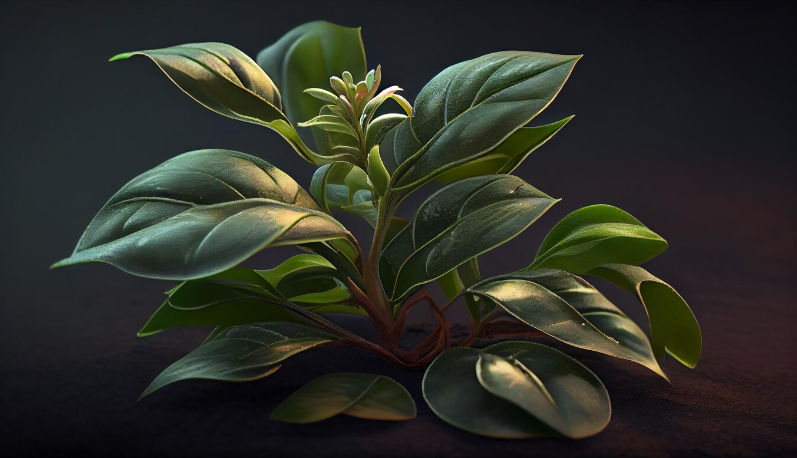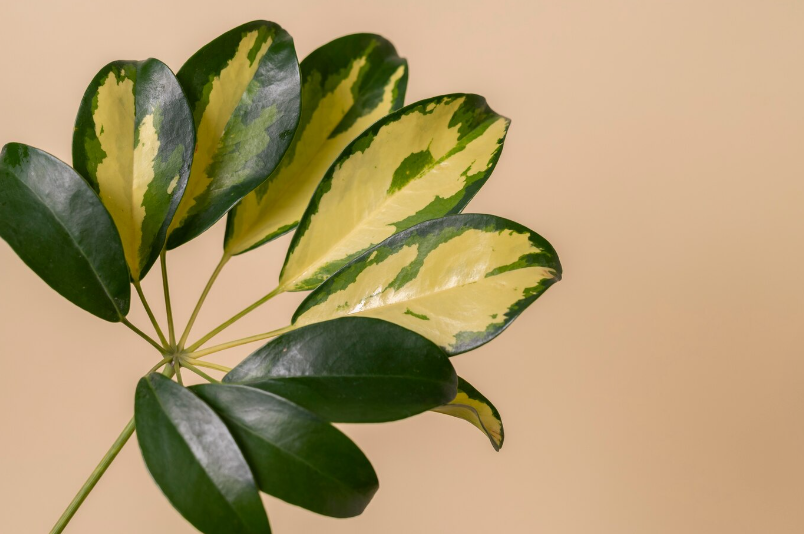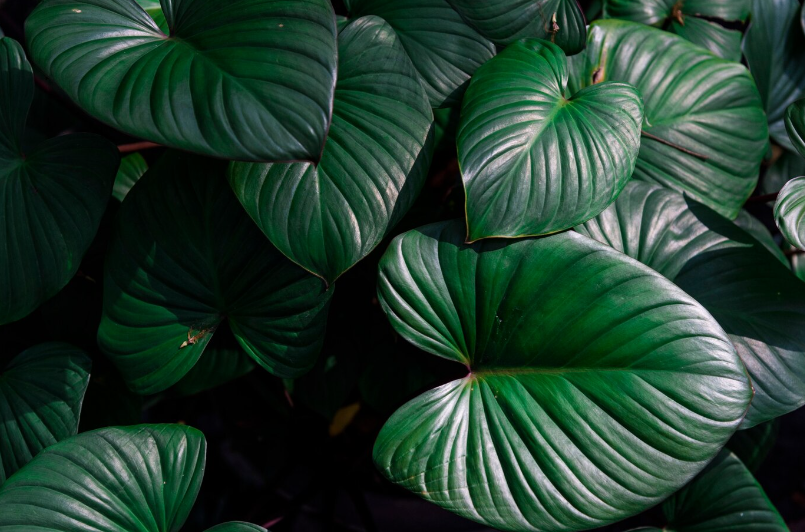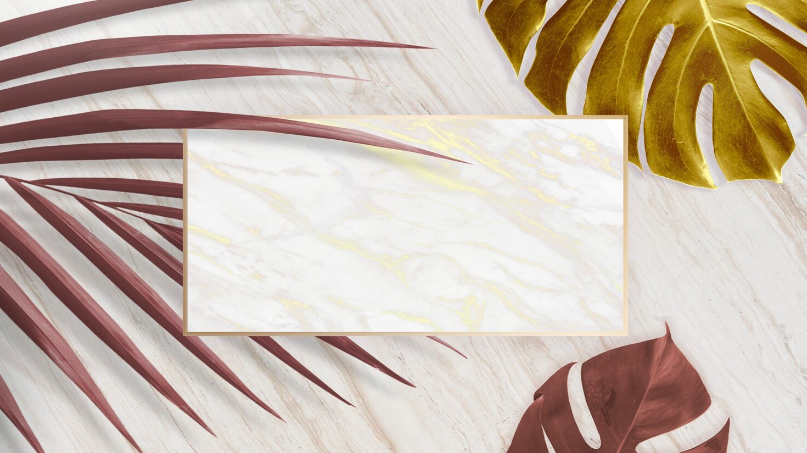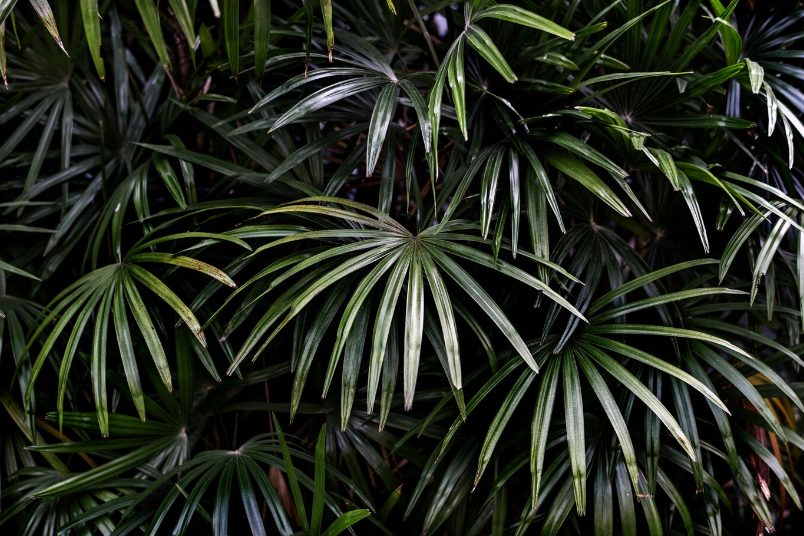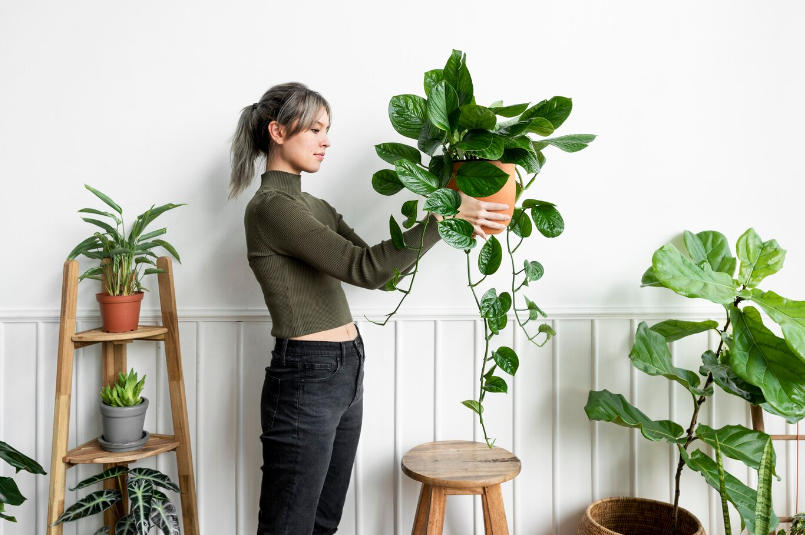Light Needs for White Knight and Rugosum Philodendrons
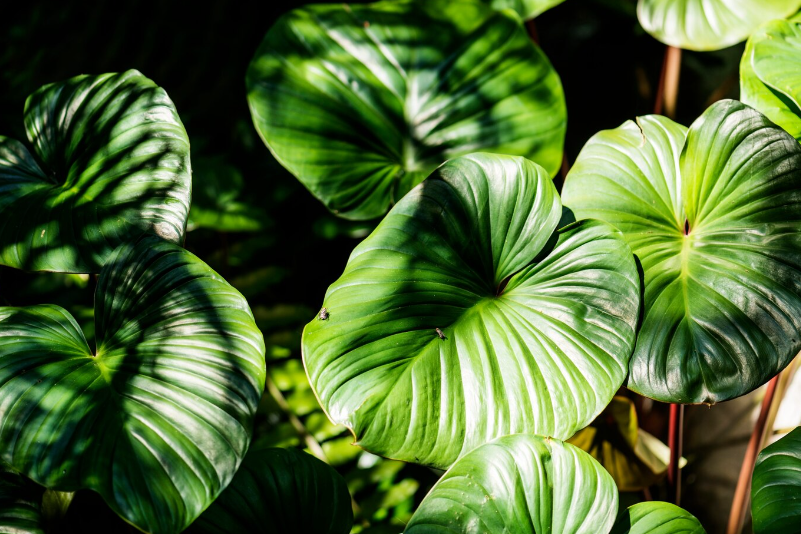
When it comes to houseplants, philodendrons are a popular choice for many plant lovers. Their beautiful leaves and low-maintenance nature make them a great addition to any home or office. Two particularly stunning varieties of philodendrons are the White Knight and Rugosum philodendrons. However, in order to keep these plants thriving, it is important to understand their light requirements.
The White Knight philodendron is known for its stunning variegated leaves and is highly sought after by plant enthusiasts. In order to maintain its vibrant foliage, this plant requires bright, indirect light. Placing the White Knight philodendron near a north-facing window or a few feet away from a brightly lit east or west-facing window is ideal. Direct sunlight should be avoided, as it can scorch the leaves and cause them to turn brown.
The Rugosum philodendron, also known as the Miniature Velvet Philodendron, is loved for its unique deep green color and velvety texture. This plant is adaptable to a range of lighting conditions but thrives in bright, indirect light. Placing the Rugosum philodendron near a south or west-facing window, where it can receive several hours of bright, indirect sunlight, will help promote healthy growth. However, it can also tolerate lower light conditions and can be placed further away from windows or in rooms with less natural light.
In conclusion, both the White Knight and Rugosum philodendrons require bright, indirect light to thrive. While the White Knight philodendron prefers a bit more light and should not be exposed to direct sunlight, the Rugosum philodendron is more adaptable and can tolerate lower light conditions. By providing the proper lighting conditions, you can enjoy the beauty of these philodendrons in your home or office for years to come.
Essential Light Requirements
White Knight Philodendron
The White Knight Philodendron requires bright, indirect light to thrive. It prefers bright, filtered light but can also tolerate medium light conditions. Avoid exposing it to direct sunlight as it can scorch the leaves. Placing it near a window with sheer curtains or in a room with bright ambient light will provide the ideal lighting conditions for this plant.
Rugosum Philodendron
The Rugosum Philodendron is a shade-loving plant that prefers low to medium light conditions. It can tolerate bright, indirect light but will suffer if exposed to direct sunlight for extended periods. It is best to place it in a spot where it receives bright, indirect light for a few hours a day, while also being shaded from direct sunlight. An east-facing window or a location a few feet away from a west or south-facing window can provide suitable lighting for this plant.
Determining the Right Amount of Light for Philodendron White Knight
Philodendron White Knight is a stunning and sought-after plant because of its unique foliage coloration. In order to keep it thriving and looking its best, it’s important to provide the right amount of light.
When it comes to light requirements, Philodendron White Knight is considered a medium to bright light plant. This means that it requires moderate to high levels of light to thrive. However, direct sunlight should be avoided as it can cause the leaves to burn and fade.
One way to determine the right amount of light for your Philodendron White Knight is by observing its foliage. If the leaves are pale green or yellowish, it means that the plant is not receiving enough light. On the other hand, if the leaves are dark green and start to droop or wilt, it may be an indication that the plant is receiving too much light.
It’s also important to consider the direction and intensity of the light source. Philodendron White Knight prefers bright, indirect light. Placing it near a north or east-facing window is usually ideal as these windows provide bright, indirect light throughout the day. If you don’t have access to natural light, you can also use artificial grow lights to provide the necessary light levels.
Remember to periodically rotate your Philodendron White Knight towards the light source to ensure even growth and prevent the plant from leaning towards one direction.
Overall, finding the right amount of light for your Philodendron White Knight is crucial for its health and appearance. With the right amount of light, this stunning plant will continue to thrive and bring beauty to your indoor space.
General Light Needs of Philodendrons, Including Rugosum
Proper lighting is crucial for the growth and development of Philodendrons, including the Rugosum variety. These plants thrive in bright, indirect light conditions. While they can tolerate lower light levels, they will grow best when exposed to moderate to high levels of light.
Direct sunlight should be avoided, as it can burn the leaves and cause damage to the plant. Instead, place your Philodendrons in a location where they will receive bright, filtered light. This can be achieved by placing them near a window with a sheer curtain or by using a shade cloth to filter the light.
Rugosum Philodendrons can also adapt to lower light conditions, such as those found in offices or homes with limited natural light. If placed in such locations, it is important to supplement the light with artificial lighting, such as fluorescent or LED grow lights. These lights should be placed at a distance of 12 to 18 inches above the plant and kept on for 10 to 12 hours a day.
In addition to providing the right amount of light, it is important to consider the duration of exposure. Philodendrons, including Rugosum, need a balance between light and dark periods. They require around 12 to 16 hours of darkness each day to rest and rejuvenate.
It is important to note that each Philodendron variety may have slightly different light requirements, so it’s always a good idea to research the specific needs of your plant. Taking care of the light needs of your Philodendron, including Rugosum, will ensure that it grows healthy and thrives in your home or office.
Comparing Light Requirements: Philodendrons vs. Pothos
When it comes to indoor plants, two popular choices are philodendrons and pothos. Both belong to the Araceae family and are renowned for their ability to thrive in low-light conditions. However, there are some differences in their light requirements that can affect their growth and overall health.
Philodendrons are known for their large, glossy leaves and are native to the tropical regions of America. These plants are adaptable and can tolerate a wide range of light conditions. However, they generally prefer bright, indirect light. Placing them near a window where they receive filtered sunlight or in a spot with bright ambient light is ideal for their growth.
Pothos, on the other hand, are known for their trailing vines and heart-shaped leaves. They are native to the Solomon Islands and prefer bright, indirect light. These plants can tolerate lower light conditions but will thrive better with moderate to bright light. Placing them near a north or east-facing window or providing them with artificial grow lights can help them thrive.
| Light Requirements | Philodendrons | Pothos |
|---|---|---|
| Light Intensity | Bright, indirect light | Bright, indirect light (can tolerate lower light) |
| Light Duration | 10-12 hours per day | 10-12 hours per day |
| Light Quality | Filtered sunlight, bright ambient light | Filtered sunlight, bright ambient light |
It’s important to note that both philodendrons and pothos can tolerate lower light conditions, but too little light can result in leggy growth and decreased overall health. It’s always best to provide them with the right amount and quality of light to ensure optimal growth.
In conclusion, while both philodendrons and pothos can thrive in low-light conditions, philodendrons generally prefer brighter light compared to pothos. Understanding their light requirements can help you create the ideal conditions for these beautiful plants to grow and flourish in your home.
Identifying and Addressing Light-Related Issues
Proper lighting is one of the most crucial factors in the successful cultivation of White Knight and Rugosum Philodendrons. Insufficient or excessive light can lead to a range of issues that affect the health and appearance of these plants. By learning to identify and address light-related problems, you can ensure that your Philodendrons thrive in their environment.
Here are some common light-related issues that Philodendron growers may encounter:
1. Insufficient Light: When Philodendrons don’t receive enough light, they may exhibit elongated stems, pale foliage, and poor growth. To address this issue, move your plants to a brighter location, closer to a window or provide artificial light using suitable grow lights.
2. Excessive Light: On the other hand, exposure to too much light can cause sunburn and leaf damage in Philodendrons. If you notice brown patches or yellowing leaves, consider moving your plants to a spot with filtered or indirect light. In some cases, using sheer curtains or blinds can help diffuse intense sunlight.
3. Uneven Light Distribution: Occasionally, certain parts of your Philodendron may receive more light than others, resulting in uneven growth or coloration. Rotate your plants regularly to ensure each side receives an equal amount of light. If needed, you can also adjust the height or position of artificial light sources to achieve a balanced distribution.
4. Light Intensity Variations: Inconsistent light intensity can lead to weakened foliage and stunted growth. Use a light meter to measure the intensity of light at different spots in your growing area. If there are significant variations, consider repositioning your plants or using reflective surfaces to redirect light and create a more stable environment.
5. Adjusting Light Levels for Variegated Varieties: If you have variegated Philodendrons, keep in mind that they often require brighter light conditions to maintain their variegation. Monitor their growth and color patterns closely, and if necessary, gradually increase the light levels to sustain the vibrant variegation.
Understanding and addressing these light-related issues can significantly improve the health and appearance of your White Knight and Rugosum Philodendrons. By providing the right amount and quality of light, you can help your plants thrive and showcase their beauty to the fullest.
Recognizing Signs of Inadequate Light in Your Philodendron
If your Philodendron is not receiving enough light, it will exhibit certain signs that can help you identify the problem. Recognizing these signs early on is crucial in ensuring the health and well-being of your plant.
1. Leggy growth: If your Philodendron starts to stretch out and grow long stems with sparse foliage, it is a clear indication that it is not receiving adequate light. The plant is trying to reach for more light, causing its growth to become stretched and weak.
2. Pale leaves: Inadequate light can cause the leaves of your Philodendron to appear pale or yellowish. This is because the chlorophyll production is being hindered by the lack of light, resulting in a less vibrant and healthy leaf color.
3. Leaf drop: When a Philodendron is not getting enough light, it may start shedding its lower leaves. This is the plant’s way of conserving energy and focusing its resources on new growth. If you see a significant amount of leaf drop, it is a sign that your plant needs more light.
4. Slow or stunted growth: Insufficient light can impair the growth rate of your Philodendron. If you notice that your plant is not growing as quickly as it should or if the new leaves are smaller than usual, it is likely due to a lack of adequate light.
5. Reaching towards light sources: If your Philodendron is leaning or bending towards a light source, it is a clear sign that it is not receiving enough light. The plant will try to position itself closer to the light in order to maximize its light absorption.
6. Lack of flowering: If your Philodendron is not receiving sufficient light, it may fail to produce flowers. Adequate light is essential for triggering the flowering process in many Philodendron species, so the absence of blooms can indicate a light deficiency.
7. Overall weak appearance: A Philodendron that is not getting enough light will generally have a weak and unhealthy appearance. The leaves may become thin and floppy, and the overall growth may be slow and stunted. This is a clear indication that your plant needs more light.
If you notice any of these signs in your Philodendron, it is important to provide it with more light as soon as possible. Adjust the placement of your plant to a brighter location or consider supplementing natural light with artificial lighting options. Providing adequate light will help your Philodendron thrive and maintain its beautiful and healthy appearance.
Indicators That Your Philodendron is Receiving Too Much Light
If your Philodendron is receiving too much light, there are some clear indicators that you can look out for. It’s important to identify these signs and make adjustments to avoid damaging your plant.
One indicator is leaf scorching. When your Philodendron is exposed to excessive light, the leaves may start to show signs of burning. They may develop brown or yellow spots, or the edges of the leaves may become crispy and dry. If you notice these symptoms, it’s a sign that your plant is receiving too much light.
Another sign is leaf bleaching. When a Philodendron is exposed to intense sunlight, the leaves may lose their vibrant green color and become lighter or even white. This is a defense mechanism to protect the plant from excessive light. If you see your Philodendron leaves turning pale, it’s a sign that they are getting too much light.
Furthermore, if your Philodendron is receiving excessive light, it may show signs of stunted growth. Too much light can cause stress to the plant, which can inhibit its growth and development. If you notice your Philodendron is not growing as fast as it should or the new leaves are small and underdeveloped, it could be a result of too much light exposure.
Lastly, your Philodendron may exhibit wilting or drooping leaves if it’s receiving too much light. Excessive light can cause the plant to lose water more quickly through transpiration, leading to dehydration. If the leaves of your Philodendron are droopy or wilted, it’s a sign that it’s not getting enough water due to too much light exposure.
To prevent these issues, it’s essential to provide your Philodendron with the right amount of light. Consider adjusting its placement to a spot with indirect or filtered light. You can also use curtains or sheer blinds to diffuse the sunlight. By monitoring these indicators and making necessary adjustments, you can ensure your Philodendron thrives and stays healthy.
Best Philodendron Varieties for Low-Light Environments
If you have a low-light environment in your home or office, don’t despair! There are still philodendron varieties that can thrive in these conditions. While most philodendrons prefer bright indirect light, some varieties have adapted to lower light levels.
1. Philodendron Brasil (Philodendron hederaceum ‘Brasil’)
The Philodendron Brasil is a popular variety known for its beautiful heart-shaped leaves with striking variegation. This plant can tolerate low-light conditions, making it an excellent choice for beginners or those with less access to natural sunlight.
2. Philodendron Silver Sword (Philodendron hastatum)
The Philodendron Silver Sword is a stunning variety with elongated, silver-colored leaves. This plant can adapt well to low-light conditions and can add an elegant touch to any space. It prefers indirect light but can handle lower light levels as well.
3. Philodendron Red Emerald (Philodendron erubescens)
The Philodendron Red Emerald is another great option for low-light environments. It has vibrant red leaves that can add a pop of color to your space, even in darker corners. This variety thrives in indirect light but can tolerate lower light levels as well.
4. Philodendron Moonlight (Philodendron ‘Moonlight’)
The Philodendron Moonlight is a popular choice for its bright chartreuse foliage. While it prefers moderate to bright indirect light, it can still survive in areas with low-light conditions. It’s a great way to add a touch of color to spaces with limited natural light.
5. Philodendron Green Heartleaf (Philodendron scandens)
The Philodendron Green Heartleaf is a classic variety that can thrive in low-light environments. Its heart-shaped leaves are glossy and green, making it a great addition to any space. This plant can tolerate lower light levels, but it’s always best to provide some indirect light whenever possible.
Conclusion:
While most philodendron varieties prefer bright indirect light, these five options can thrive in low-light environments. Whether you have a north-facing room or a cubicle with limited sunlight, these philodendrons can add beauty and greenery to your space. Just make sure to monitor their water and provide occasional indirect light for their optimal growth.
Enhancing Variegation and Plant Health
Variegated plants, such as White Knight and Rugosum Philodendrons, are highly sought after for their unique and colorful foliage. To enhance the variegation and overall health of these plants, there are several key factors to consider:
- Light intensity: Variegated plants require bright, indirect light to maintain and enhance their coloration. Placing them near a window with filtered light or using artificial grow lights can help provide the necessary light intensity.
- Light duration: These plants thrive with a consistent light cycle. Aim for 12 to 14 hours of light per day, and avoid sudden changes in the light duration, as this can stress the plant.
- Temperature: These Philodendrons prefer a warm and humid environment. Ideal temperatures range between 65°F to 85°F (18°C to 29°C) during the day and around 60°F to 70°F (15°C to 21°C) at night.
- Humidity: Higher humidity levels help keep the leaves of variegated plants healthy and prevent them from drying out. Consider using a humidifier or placing the plant on a tray filled with water and pebbles to increase humidity levels.
- Fertilization: Regular fertilization is essential for the proper growth and variegation of these plants. Use a balanced water-soluble fertilizer and follow the instructions on the packaging for application frequency and dosage.
- Watering: Proper watering practices are crucial to maintain plant health. These Philodendrons prefer well-draining soil, so ensure that excess water can easily escape. Allow the top inch of soil to dry out before watering again.
- Pruning: Regular pruning helps maintain the shape and overall health of variegated Philodendrons. Remove any yellowing or damaged leaves, as they can affect the health and appearance of the plant.
By paying attention to these key factors, you can ensure that your White Knight and Rugosum Philodendrons thrive, displaying vibrant and beautiful variegation while staying healthy.
Techniques to Increase Variegation in White Knight Philodendrons
White Knight Philodendrons are known for their stunning variegation, which can range from creamy white to pale yellow. If you want to enhance the variegation in your White Knight Philodendron, there are several techniques you can try.
1. Increase light intensity: Variegated leaves require more light than non-variegated ones. Place your White Knight Philodendron in a location that receives bright, indirect light. Avoid direct sunlight, as it can scorch the leaves.
2. Rotate the plant: Rotate your White Knight Philodendron regularly to ensure that all sides of the plant receive equal light exposure. This promotes even variegation throughout the leaves.
3. Provide humidity: White Knight Philodendrons thrive in high humidity environments. Increase humidity around the plant by misting its leaves regularly or placing a humidifier nearby.
4. Adjust watering and fertilizing: Ensure that you are providing the right amount of water and fertilizer to your White Knight Philodendron. Avoid overwatering, as it can lead to root rot and reduce variegation.
5. Prune non-variegated growth: If your White Knight Philodendron produces non-variegated growth, prune it to promote more variegated growth. Focus on removing sections with solid green leaves to encourage variegation.
Remember, increasing variegation in White Knight Philodendrons is a gradual process. It may take time and experimentation to achieve the desired results. With proper care and attention, you can enjoy the stunning variegation of your White Knight Philodendron for years to come.
Factors That Affect Variegation: Light, Humidity, and Genetics
Variegation refers to the patterns of color and markings on the leaves of plants. It adds visual interest and can make a plant stand out among others. When it comes to white knight and rugosum philodendrons, variegation is highly sought after and appreciated by plant enthusiasts. However, the level of variegation can vary greatly between individual plants and even within the same plant.
Three main factors influence the variegation of white knight and rugosum philodendrons: light, humidity, and genetics. Understanding these factors can help you optimize the conditions for maximum variegation.
| Factor | Description |
|---|---|
| Light | Light plays a crucial role in variegation. White knight and rugosum philodendrons thrive in bright, indirect light. Insufficient light can lead to reduced variegation or even loss of variegation. On the other hand, excessive direct sunlight can cause sunburn and damage to the leaves, affecting variegation as well. |
| Humidity | High humidity levels are beneficial for white knight and rugosum philodendrons, as they are native to tropical regions with humid climates. Adequate moisture in the air helps the plants maintain healthy foliage and vibrant variegation. Dry air can lead to browning and crisping of the leaves, diminishing their variegated appearance. |
| Genetics | The genetics of a plant play a significant role in determining its variegation. Some white knight and rugosum philodendrons naturally exhibit more variegation, while others may have less prominent variegation or even be mostly green. This variation is due to genetic factors that control the production and distribution of pigments in the leaves. |
By providing adequate light, humidity, and understanding the genetic potential of your white knight and rugosum philodendrons, you can enhance their variegation and enjoy their unique beauty.
Can High Light Levels Lead to Increased Variegation?
One of the most fascinating aspects of variegated plants is their unique patterns and colors. Variegation refers to the presence of different colored areas on leaves, such as white, yellow, or pink patches. While variegation can occur naturally, it is also possible to enhance or intensify it through various means. One such method that many plant enthusiasts swear by is exposing variegated plants to high light levels.
It is important to note that not all variegated plants respond well to high light levels. Each species has its own light requirements, and it is crucial to understand these needs in order to promote healthy growth and vibrant variegation. Some variegated plants, like the White Knight and Rugosum Philodendrons, thrive in bright, indirect light. When provided with the right conditions, these plants can exhibit remarkable variegation patterns and coloration.
So, can high light levels truly lead to increased variegation? The answer is, it depends. While high light levels can result in more vivid colors and pronounced variegation in certain plants, excessive exposure to harsh direct sunlight can be detrimental. Leaves may become scorched or develop brown spots, and the overall health of the plant may decline.
Therefore, it is crucial to strike the right balance when it comes to light levels for variegated plants. Bright, indirect light is generally recommended for most variegated species, as it allows for adequate energy production through photosynthesis without subjecting the plant to the risk of sunburn.
Additionally, it is worth noting that variegated plants tend to have less chlorophyll compared to their non-variegated counterparts. This means that they may have reduced photosynthetic capacity and may require slightly more light to compensate for this. However, it is important to monitor the plant closely and adjust the light levels accordingly to avoid any negative consequences.
In conclusion, while high light levels can potentially enhance variegation in certain plants, it is crucial to understand and meet the specific light requirements of each species. Providing bright, indirect light while avoiding direct sunlight is generally the best approach. By striking the right balance, you can help promote healthy growth, stunning variegation, and overall thriving plants.
Special Considerations for White Knight Philodendrons
White Knight Philodendrons are known for their stunning white and green variegated leaves. However, they require some special considerations in terms of light to maintain their beautiful appearance.
Firstly, White Knight Philodendrons prefer bright, indirect light. They shouldn’t be exposed to direct sunlight as it can scorch their delicate foliage. Place them near a window with filtered light or provide them with artificial grow lights.
In addition, it’s important to avoid sudden temperature fluctuations for White Knight Philodendrons. They thrive in warm and humid conditions, so try to keep the room temperature between 65-75°F (18-24°C) and maintain a relative humidity level of 60-70%. If the humidity is too low, you can use a humidifier or place the plant on a water-filled tray with pebbles.
Another consideration for White Knight Philodendrons is the need for consistent watering. They prefer slightly moist but not waterlogged soil. Before watering, make sure the top inch of the soil is dry. When watering, use room temperature water and allow excess water to drain out completely to prevent root rot.
White Knight Philodendrons are also sensitive to chemicals, so avoid using tap water that contains chlorine or fluoride. Filtered or distilled water is recommended for watering to prevent leaf discoloration.
Lastly, it’s important to prevent any stress or damage to the leaves of White Knight Philodendrons. Avoid touching or moving them too often as it can cause leaf marks. If you need to clean the leaves, use a soft cloth or sponge gently.
By providing the right amount of light, humidity, and water, you can ensure that your White Knight Philodendron stays healthy and maintains its unique variegation for years to come.
The Importance of Indirect Light and Shade for Philodendrons
Philodendrons are tropical plants that thrive in indirect light and shade. While they can tolerate some direct sunlight, excessive exposure to strong sunlight can harm their leaves and cause them to burn. Therefore, it is crucial to provide them with the right amount of indirect light and shade to ensure their optimal growth and health.
Indirect light refers to the light that is diffused or filtered before reaching the plants. This can be achieved by placing the philodendrons near a window with sheer curtains or by providing them with a few hours of morning or evening sun. This type of light is ideal for philodendrons as it mimics their natural habitat in the understory of the rainforest.
Shade is also essential for philodendrons as it protects them from intense heat and direct sunlight. While they can tolerate some low-light conditions, it is best to avoid placing them in complete darkness as this can lead to stunted growth and weak, leggy stems. Finding the right balance between light and shade is crucial for the overall health and well-being of the plants.
One way to provide the philodendrons with the right amount of light and shade is by using a sheer curtain or a sheer fabric shade cloth. This will help filter the sunlight while still allowing enough light to reach the plants. Another option is to place them in a partially shaded area, such as under a tree or near a north-facing window.
It is important to note that different species of philodendrons have varying light requirements. Some species, like the White Knight Philodendron, prefer brighter indirect light, while others, like the Rugosum Philodendron, can tolerate lower light conditions. Therefore, it is essential to do some research on the specific species of philodendron you have to ensure you provide them with the right amount of light and shade.
In conclusion, providing philodendrons with indirect light and shade is essential for their optimal growth and health. This can be achieved by using sheer curtains or shade cloth, or by placing them in a partially shaded area. Additionally, it is important to consider the specific light requirements of the philodendron species you have to ensure you meet their individual needs. With the right amount of light and shade, your philodendrons will thrive and bring beauty to any indoor or outdoor space.
Managing Humidity Levels for White Knight Philodendrons
White Knight Philodendrons, like other tropical plants, thrive in high humidity environments. It is important to maintain the right humidity levels to ensure the health and growth of your White Knight Philodendrons. Here are some tips on how to manage humidity levels for your plants:
| Method | Description |
|---|---|
| Misting | Misting the leaves of your White Knight Philodendrons regularly can help to increase humidity around the plant. Use a spray bottle to mist the leaves with water, being careful not to overwater or soak the soil. |
| Pebble Tray | Placing a tray with water and pebbles near your White Knight Philodendrons can help to create a humid microclimate. As the water evaporates, it increases the humidity around the plant. |
| Humidifier | Using a humidifier is one of the most effective ways to maintain a consistent and ideal humidity level. Set up a humidifier near your White Knight Philodendrons and adjust the settings to meet the plant’s requirement. |
| Bathroom or Kitchen | If you have a bathroom or kitchen with high humidity levels, consider placing your White Knight Philodendrons in these areas. The natural humidity from showers or cooking can provide an optimal environment for the plants. |
| Grouping | Grouping your White Knight Philodendrons together can help to create a microclimate with higher humidity. The plants release moisture through transpiration, which increases the overall humidity in the area. |
By managing humidity levels for your White Knight Philodendrons, you can create an ideal environment for these tropical plants to thrive. Regular misting, using pebble trays, humidifiers, utilizing naturally humid areas, and grouping plants together are all effective techniques to ensure your White Knight Philodendrons receive the humidity they need for optimal growth.
Possibility of Variegation Reversion in White Knight
White Knight is an exquisite variety of philodendron known for its stunning white and green variegated leaves. However, there is a possibility of variegation reversion in this particular cultivar due to genetic factors.
Variegation in plants is caused by mutations in their chromosomes, resulting in the uneven distribution of chlorophyll in the leaves. This genetic alteration gives rise to the unique variegated patterns and colors observed in plants like White Knight.
However, variegation is considered a fragile trait and can be unstable in some plants. White Knight is no exception to this. Over time, the genetic factors responsible for variegation can revert back, resulting in leaves with little to no variegation. This process is known as variegation reversion.
There are several factors that can contribute to the possibility of variegation reversion in White Knight:
- Genetic instability: Some plants are naturally more prone to variegation reversion due to inherent genetic instability. This means that even with proper care, the variegation in White Knight may not remain stable.
- Lack of light: Insufficient light can also increase the likelihood of variegation reversion. White Knight requires bright, indirect light to maintain its variegation. Without adequate light, the plant may revert to producing leaves with less variegation or completely green leaves.
- Temperature fluctuations: Drastic temperature changes can stress the plant and make it more susceptible to variegation reversion. It is important to keep the temperature consistent and avoid exposing the plant to extreme temperature fluctuations.
- Inadequate care: Improper watering, fertilization, and general care can weaken the plant and make it more prone to variegation reversion. Providing the right conditions, including well-draining soil, regular fertilization, and proper watering, can help minimize the chances of reversion.
To reduce the possibility of variegation reversion in White Knight, it is important to provide the plant with optimal growing conditions. This includes placing it in a well-lit location, avoiding drastic temperature changes, and providing the necessary care.
Although variegation reversion is a possibility in White Knight, it does not diminish the beauty and uniqueness of this philodendron variety. With proper care and maintenance, you can enjoy the stunning variegated leaves of White Knight for a long time.
Questions and answers:
How much light do White Knight and Rugosum Philodendrons need?
White Knight and Rugosum Philodendrons require bright, indirect light. They can tolerate some morning or evening sun, but it’s best to avoid direct sunlight as it can burn their leaves.
Can I place my White Knight and Rugosum Philodendrons in a low light area?
While White Knight and Rugosum Philodendrons can tolerate lower light conditions, they thrive best in bright, indirect light. Placing them in a low light area may result in slower growth and less vibrant foliage.
What happens if I expose my White Knight and Rugosum Philodendrons to direct sunlight?
If exposed to direct sunlight, the leaves of White Knight and Rugosum Philodendrons can get burnt and damaged. It’s best to provide them with bright, indirect light to keep them healthy and happy.
Can I use artificial light for my White Knight and Rugosum Philodendrons?
Yes, you can use artificial light to supplement the natural light for your White Knight and Rugosum Philodendrons. Make sure to use a full spectrum grow light and adjust the duration of light exposure based on the specific needs of the plants.
How long should I keep my White Knight and Rugosum Philodendrons under artificial light?
The duration of light exposure for White Knight and Rugosum Philodendrons under artificial light depends on the specific needs of the plants. As a general guideline, they should receive around 10-12 hours of artificial light per day to ensure proper growth and development.
